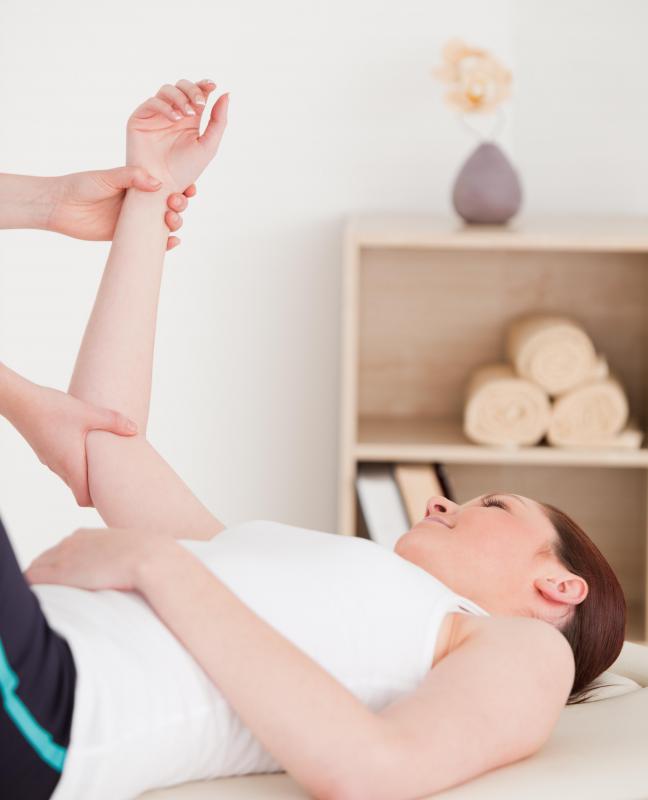At WiseGEEK, we're committed to delivering accurate, trustworthy information. Our expert-authored content is rigorously fact-checked and sourced from credible authorities. Discover how we uphold the highest standards in providing you with reliable knowledge.
How do I Choose the Best Forearm Guard?
In order to make the best choice when choosing a forearm guard, you must first determine exactly why you need it. If you have suffered from a strained or sprained forearm muscle, you should look for a lightweight guard that will provide this part of your arm with moderate support. In contrast, if you have torn a ligament, muscle, or tendon in the forearm, a heavier duty guard that can provide a greater degree of protection is best for you. Finally, if you have been diagnosed with carpal tunnel syndrome, tennis elbow, or another condition that affects your forearm, you will need a different type of guard entirely. Be sure to consult with your doctor in order to achieve optimal results when it comes to choosing the right forearm guard for you.
In addition to considering why you need a forearm guard, you must also evaluate how long you will need to keep it on. For example, if you have a simple forearm strain or sprain, you should look for a guard that can be easily removed at home. In contrast, guards that are intended for the promotion of healing of tendon tears or even broken bones may often have to be placed on by a qualified medical professional, like an occupational therapist.

For best results, consider what types of activities you engage in in order to find the right type of forearm guard. If you participate in athletic activities that will force you to come in contact with other players, you will need a guard that allows for player-to-player contact. These particular guards typically have a smoother surface that will not cause any punctures or scratches to the skin of an opponent and can be provided to you by a physical therapist or athletic trainer.

Finally, for best results when choosing a forearm guard, be sure to look for a product that fits your forearm properly. Ideally, the guard should fit securely against your forearm, while still allowing you a normal range of movement in your wrist and elbow. In addition, most reputable guards should have adjustable straps that allow for changes in your forearm size due to swelling. If you are concerned about finding a forearm guard that fits you properly, try it on. This way, you will know whether or not the forearm guard fits you properly before making a final purchase.
AS FEATURED ON:
AS FEATURED ON:














Discuss this Article
Post your comments